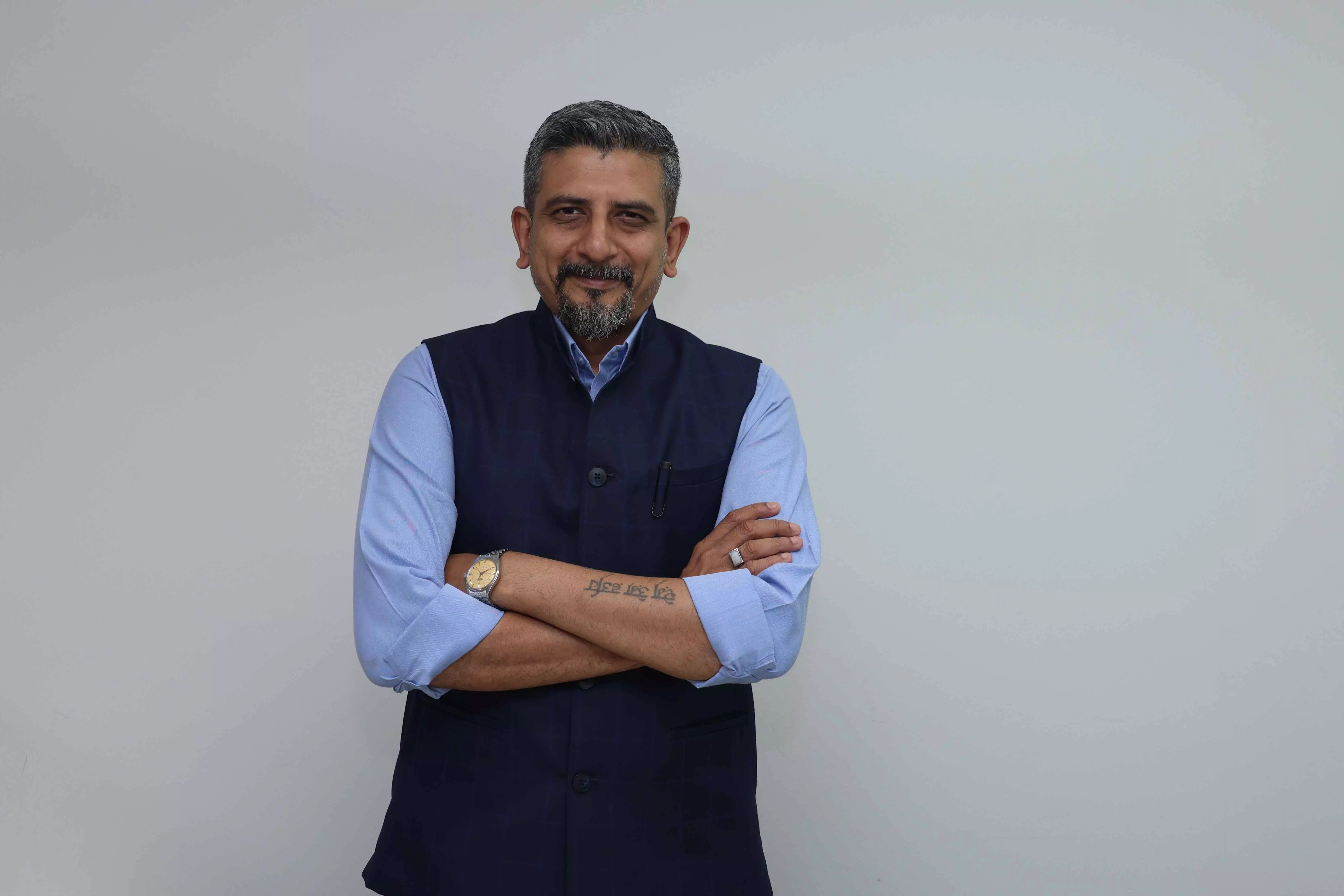Automation and AI are transforming design for manufacturing
Prof Bhaskar Bhatt, Dean, UPES School of Design, shares valuable insights on the current design trends and how tech integration caAutomation and AIn help in delivering high quality products Q1: What role does product aesthetics play in influencing consumer perception? Ans: Product aesthetics, consumer perception, functionalism, and usability are closely interrelated in shaping consumer experience. Aesthetics - form, color, textures, & materials influence first impressions and emotional connections, often determining whether a consumer feels drawn to a product. Positive aesthetic appeal enhances perceptions of quality and value. Design is an optimal balance between beauty and function, not just aesthetics as commonly understood. Functionalism and usability ensure the product delivers on its promises—being intuitive, efficient, and practical. While aesthetics attract users, functionalism and usability keep them engaged. A harmonious balance between all elements fosters satisfaction, trust, and loyalty, turning a product into both a desirable and dependable choice for consumers. Q2: How does harmonious design contribute to positive user experience? Ans: Streamlined design was a design movement in the 1970s, where designers used the tear drop shape to create visually stunning and aerodynamic forms in products and automobiles. In today’s context, harmonious or elegant design is more apt, and focuses on simplicity, clarity, and efficiency, removing unnecessary elements to enhance product aesthetics. This approach creates visually pleasing, uncluttered shapes that feel intuitive and easy to interact with. A harmonious design often evokes a positive emotional response, as it communicates sophistication, ease, and modernity. Users are drawn to the elegance and functionality of minimalist products, feeling more confident in their usability. By prioritizing both aesthetics and function, streamlined designs foster a sense of calm and satisfaction, making them more appealing and memorable to consumers, enhancing brand perception and emotional connection. Q3: Can generative AI and automation constrain creative thought? Ans: Distinction must be made between using AI vs human creativity for design and AI vs automation during manufacturing of the approved design. Generative design leverages algorithms to create optimized, efficient solutions based on specific parameters, often producing complex and innovative forms or images. While this approach offers impressive visual outcomes, it can also raise concerns about the loss of human creativity. Relying too heavily on automated design processes might stifle imagination, as designers may become overly dependent on generative AI, rather than engaging in their own cognitive capabilities. This leads to a dependency on AI, potentially dulling the unique, imaginative qualities that arise from human-driven creativity. On the other hand, automation and AI are transforming design for manufacturing by streamlining processes, improving efficiency, and optimizing costs. AI-driven tools can quickly analyze product geometries, identifying the most efficient designs for production while reducing material waste. Automation further accelerates manufacturing by automating repetitive tasks, enhancing precision, and minimizing errors. This integration not only speeds up production but also allows for greater scalability, ensuring cost optimization. This helps companies to deliver high-quality products at lower costs, improving profitability and competitiveness. Q4: Why is design for durability a critical need in today’s times? Ans: Design for durability focuses on creating products that last longer, reducing the need for frequent replacements and minimizing waste. The Cradle to Cradle philosophy promotes products that are fully recyclable or reusable, aiming for a circular economy where materials are continuously repurposed. This approach helps mitigate the growing problem of electronic waste pollution, which harms the environment due to improper disposal of non-recyclable electronic components. Additionally, modularity in design allows for easy repairs or upgrades, extending product life and reducing waste. By prioritizing durability, recycling, and modularity, designers can create sustainable products that reduce the environmental impact of consumption. Q5: Can you name design classics that have withstood market changes over time? Ans: Many products have endured not only because of their timeless design but also due to their inherent functionality and adaptability. These transcend passing trends, offering both aesthetic appeal and practicality that resonate with users across generations. Their enduring popularity stems from the careful balance of form and function, with a focus on simplicity, usability, and longevity. Moreover, these products have successfully adapted to changing cultural, technological, and market dynamics, often


Prof Bhaskar Bhatt, Dean, UPES School of Design, shares valuable insights on the current design trends and how tech integration caAutomation and AIn help in delivering high quality products
Q1: What role does product aesthetics play in influencing consumer perception?
Ans: Product aesthetics, consumer perception, functionalism, and usability are closely interrelated in shaping consumer experience. Aesthetics - form, color, textures, & materials influence first impressions and emotional connections, often determining whether a consumer feels drawn to a product. Positive aesthetic appeal enhances perceptions of quality and value. Design is an optimal balance between beauty and function, not just aesthetics as commonly understood. Functionalism and usability ensure the product delivers on its promises—being intuitive, efficient, and practical. While aesthetics attract users, functionalism and usability keep them engaged. A harmonious balance between all elements fosters satisfaction, trust, and loyalty, turning a product into both a desirable and dependable choice for consumers.
Q2: How does harmonious design contribute to positive user experience?
Ans: Streamlined design was a design movement in the 1970s, where designers used the tear drop shape to create visually stunning and aerodynamic forms in products and automobiles. In today’s context, harmonious or elegant design is more apt, and focuses on simplicity, clarity, and efficiency, removing unnecessary elements to enhance product aesthetics. This approach creates visually pleasing, uncluttered shapes that feel intuitive and easy to interact with. A harmonious design often evokes a positive emotional response, as it communicates sophistication, ease, and modernity. Users are drawn to the elegance and functionality of minimalist products, feeling more confident in their usability. By prioritizing both aesthetics and function, streamlined designs foster a sense of calm and satisfaction, making them more appealing and memorable to consumers, enhancing brand perception and emotional connection.
Q3: Can generative AI and automation constrain creative thought?
Ans: Distinction must be made between using AI vs human creativity for design and AI vs automation during manufacturing of the approved design. Generative design leverages algorithms to create optimized, efficient solutions based on specific parameters, often producing complex and innovative forms or images. While this approach offers impressive visual outcomes, it can also raise concerns about the loss of human creativity. Relying too heavily on automated design processes might stifle imagination, as designers may become overly dependent on generative AI, rather than engaging in their own cognitive capabilities. This leads to a dependency on AI, potentially dulling the unique, imaginative qualities that arise from human-driven creativity. On the other hand, automation and AI are transforming design for manufacturing by streamlining processes, improving efficiency, and optimizing costs. AI-driven tools can quickly analyze product geometries, identifying the most efficient designs for production while reducing material waste. Automation further accelerates manufacturing by automating repetitive tasks, enhancing precision, and minimizing errors. This integration not only speeds up production but also allows for greater scalability, ensuring cost optimization. This helps companies to deliver high-quality products at lower costs, improving profitability and competitiveness.
Q4: Why is design for durability a critical need in today’s times?
Ans: Design for durability focuses on creating products that last longer, reducing the need for frequent replacements and minimizing waste. The Cradle to Cradle philosophy promotes products that are fully recyclable or reusable, aiming for a circular economy where materials are continuously repurposed. This approach helps mitigate the growing problem of electronic waste pollution, which harms the environment due to improper disposal of non-recyclable electronic components. Additionally, modularity in design allows for easy repairs or upgrades, extending product life and reducing waste. By prioritizing durability, recycling, and modularity, designers can create sustainable products that reduce the environmental impact of consumption.
Q5: Can you name design classics that have withstood market changes over time?
Ans: Many products have endured not only because of their timeless design but also due to their inherent functionality and adaptability. These transcend passing trends, offering both aesthetic appeal and practicality that resonate with users across generations. Their enduring popularity stems from the careful balance of form and function, with a focus on simplicity, usability, and longevity. Moreover, these products have successfully adapted to changing cultural, technological, and market dynamics, often evolving without compromising their core identity. Notable designed products include Royal Enfield, Triumph and Harley Davidson motorcycles, Braun shavers, Phillips radios, Bosch washing machines, Eames DAR, Thonet 209 & Barcelona MR90 chairs, Bajaj scooters, Vespa, Land Rovers, Toyota and Nissan pickup trucks, Electrolux refrigerators, Caterpillar, John Deere, Black and Decker power tools, Fanuc machines, Panerai & HMT wristwatches, Sumeet mixers, Sintex overhead tanks, Ray ban aviators, Canon and Nikon cameras to name a few.






































